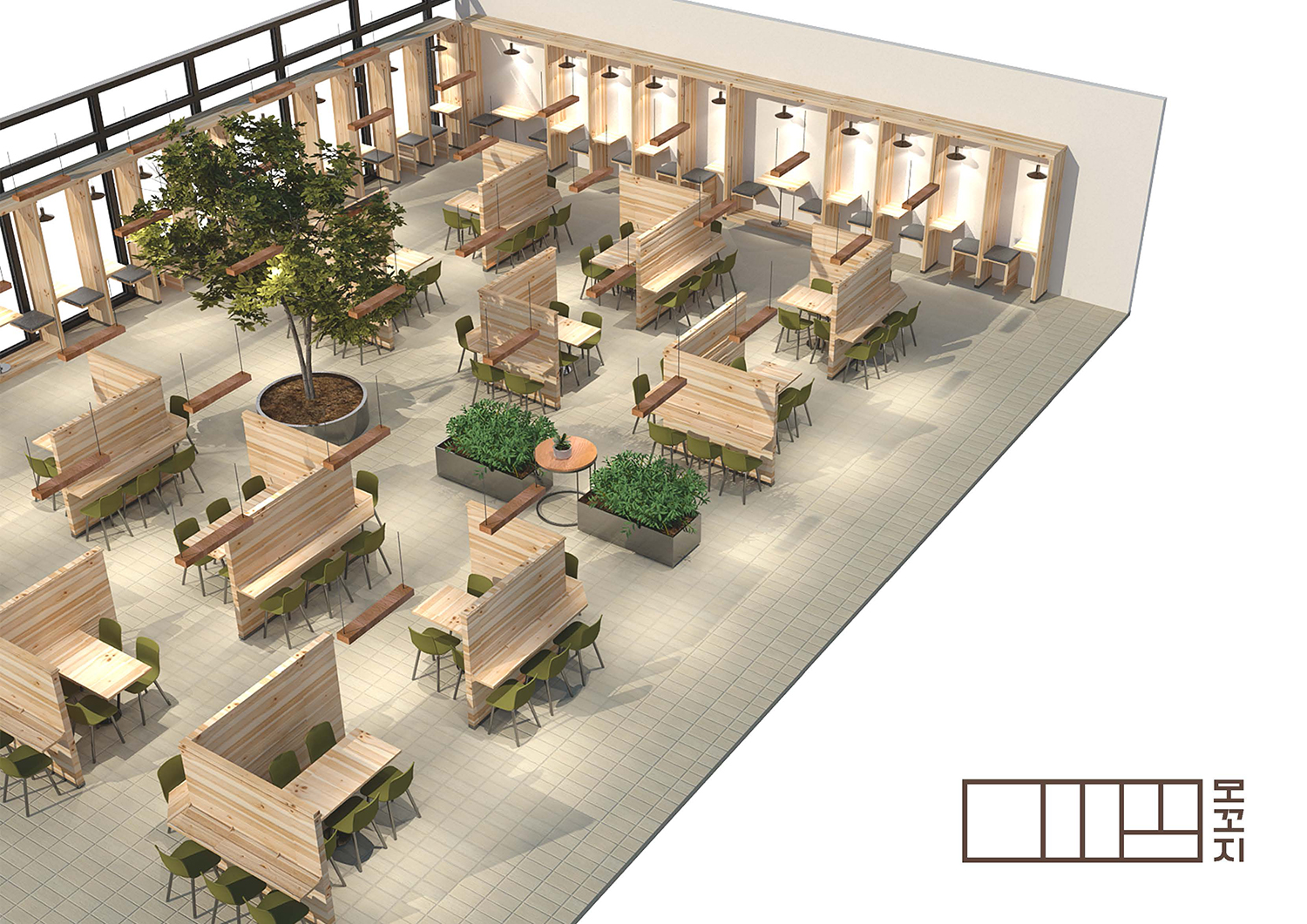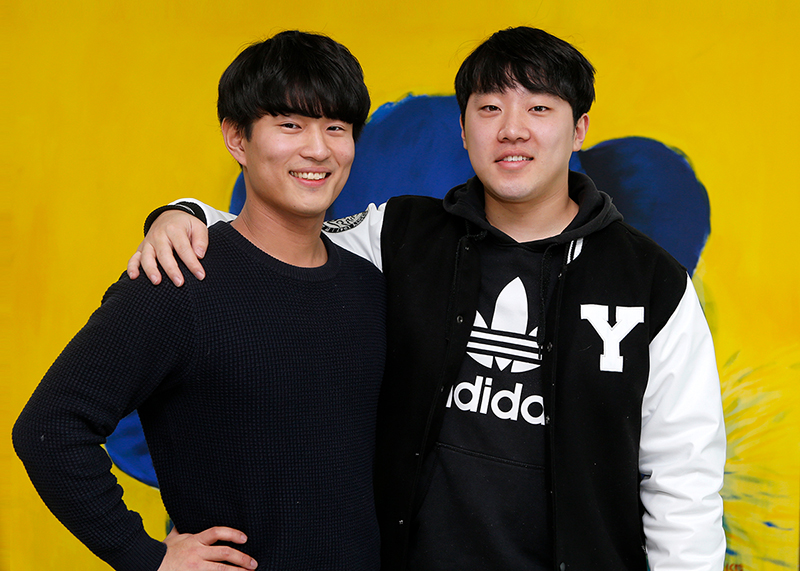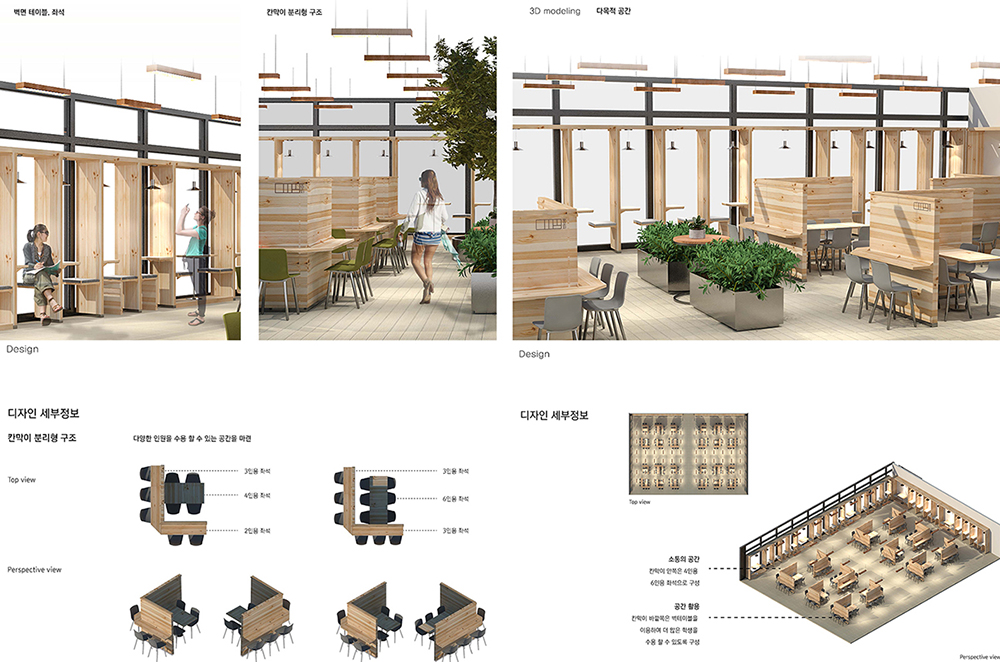“Cafeteria’s Utility Rises Just by Changing the Design!” N
No.89037- Writer pr
- Date : 2018.02.21 09:16
- Views : 8477
YU students get rid of the typical open space by dividing zones and even making space for those who wish to eat alone
Transformation to ‘Mokoji’, a cultural campus space for relaxation and rest
Received ‘Grand Prize’ in ‘Samsung Well-Story’ contest specializing in eating out
[February 5, 2018]
Transformation to ‘Mokoji’, a cultural campus space for relaxation and rest
Received ‘Grand Prize’ in ‘Samsung Well-Story’ contest specializing in eating out
[February 5, 2018]

<Student cafeteria brand ‘Mokoji’ designed by YU students>
(Grand prize in the Samsung Well-Story contest)
(Grand prize in the Samsung Well-Story contest)
YU students recently received attention by designing a student cafeteria reflecting the lifestyles and trends of college students.
The most common image of student cafeterias in college campuses is a large open and loud space. Students have different class schedules and various study and group activities. There are also many college students who prefer personal lifestyles not interrupted by other people. Unfortunately, however, most student cafeterias are designed similarly to the cafeterias of companies where employees all eat together at the same time. There were only the slightest of changes in most student cafeterias for decades.

There are college students who integrated new designs and concepts into such student cafeterias. They are Kim Yong-joon (24, left on photo, Department of Food Service Industry), Kim Young-gun (23, Department of Food Service Industry, junior), Ha Dong-woo (24, junior at the School of Materials Science and Engineering, right on photo), and Choi Yu-jin (21, sophomore at the Department of Industrial Design). They gave birth to the food and drink space brand ‘Mokoji’ (Korean word meaning many people gathering in one place’) that can house the stories of students.
Kim Yong-joon, who majors in the Food Service Industry’, said, “We made separate spaces where students can enjoy meals during lunch time when most students come to eat and be able to feel relaxed to chat and spend time. It was designed also taking into consideration those who eat alone, which has recently become a kind of a trend.”
‘Mokoji’ created a partitioned structure so that students can come together to communicate, while also allowing those who wish to spend time alone without having to worry about what others think in its cafeteria design.
Ha Dong-woo said, “Another concept of ‘Mokoji’ is the efficient use of personal time at the cafeteria. We aimed at allowing students to be able to come to ‘Mokoji’, regardless of the time for meals, to hold meetings, talk with friends, or concentrate on assignments alone.” He added, “By creating a space where students can feel free to visit at any time, it will be possible to transform the cafeteria into a place that contains the campus culture.”

Meanwhile, this idea by YU students also caught the attention of Samsung Well-Story, which specializes in food service businesses. ‘Mokoji’ won the grand prize in the contest for college students under the theme ‘coordinate student cafeterias into a new space for food and beverages’ in December of last year. Samsung Well-Story is planning to review the winning pieces and reflect them in student cafeterias that are being currently operated.